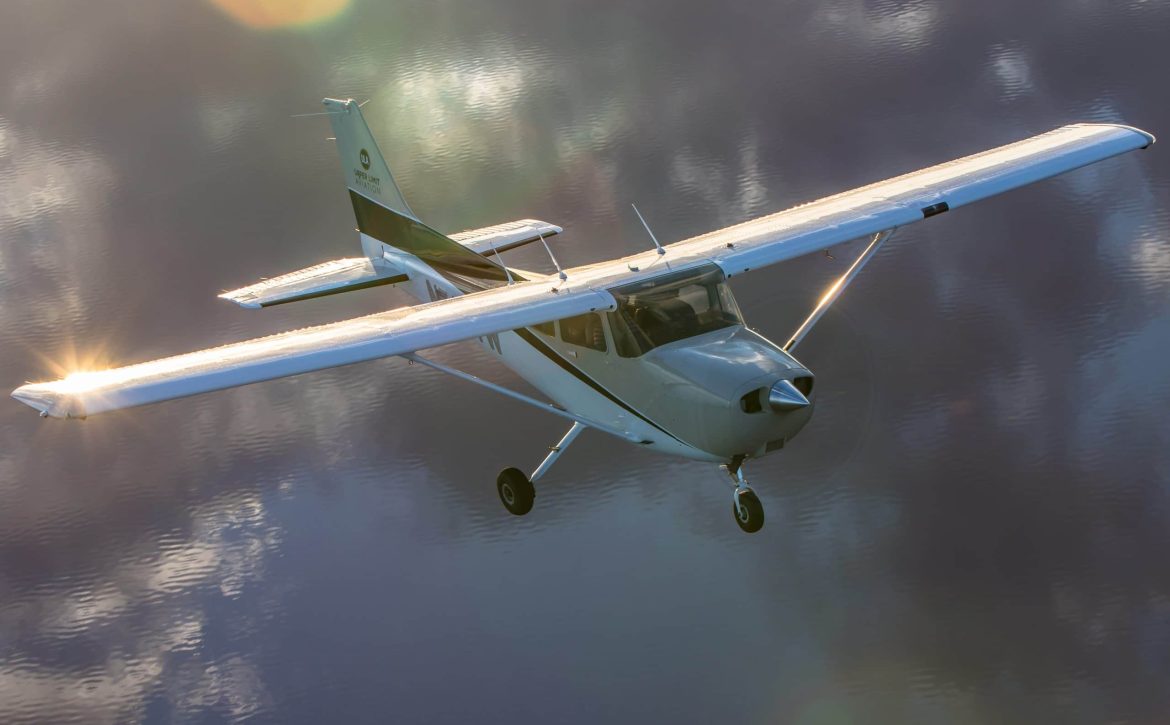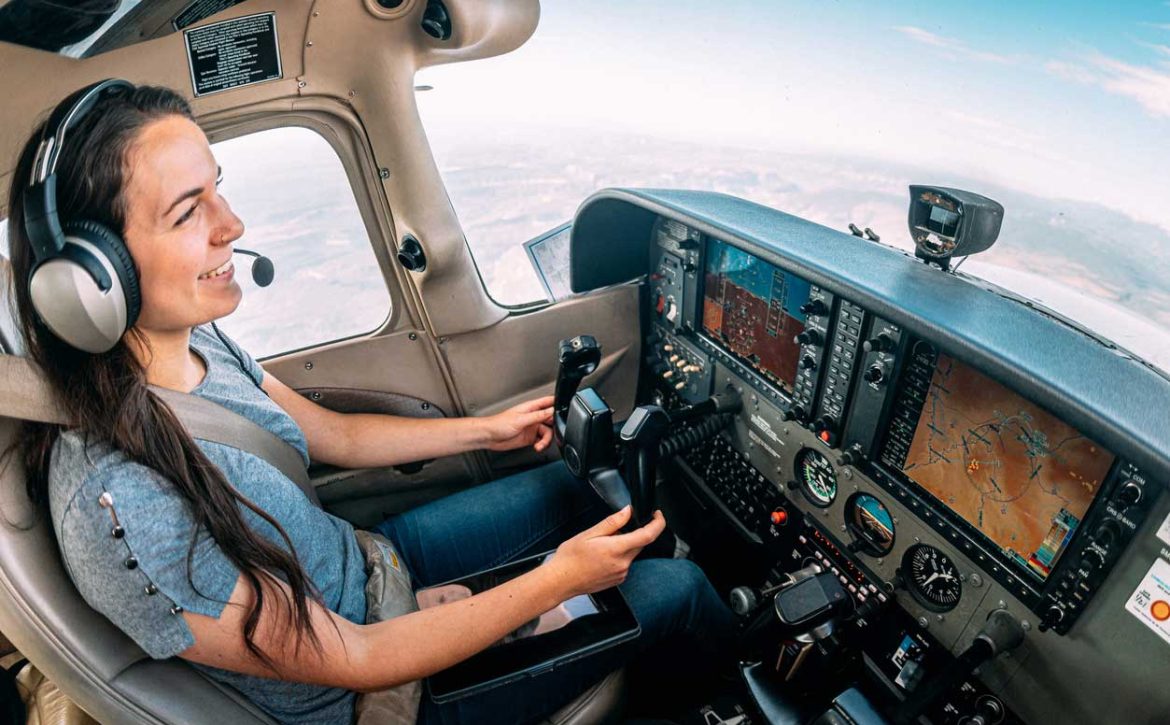Why You Should Earn Your Helicopter Instrument Rating
If you know any airplane pilots, there’s a good chance a number of them have their instrument rating and actually use it in instrument meteorological conditions (IMC). The same can’t be said for helicopter pilots though – many do have their instrument rating but have never, and will never use it.
Instrument flying is a completely different beast in helicopters, and most of this disparity is based on the basic design of the helicopter. Helicopters are inherently unstable. Because of this, the FAA requires complex stabilization systems for helicopters certified to fly in IMC – it’s not just something you can “add on” to a basic piston helicopter like you can an airplane.
Many helicopters – even the Robinson R22 – are certified for instrument training, but they’re not certified for flight in actual instrument conditions.
There also isn’t frequent need for helicopters to fly in IMC unless they’re in emergency services. Helicopters like to fly low – you won’t see them cruising through a thick cloud layer at 10,000 feet like you would an airplane. So why should you get an instrument rating for helicopters?
4 Great Reasons for Getting a Helicopter Instrument Rating
You’ll Be a Better Pilot: There’s that old saying that an instrument rating makes you a better VFR pilot. This is true! It teaches you a disciplined instrument scan and more precise flying. You’ll have better heading, altitude, and airspeed control.
More Employment Opportunities: And that’s a great segue into what employers are looking for. Some companies, even though they have no IMC-certified helicopters, require their pilots to have an instrument rating. This is for the same reasons just mentioned – instrument-rated pilots are usually more precise. Even if they don’t require an instrument rating, your experience from your instrument training will help you stand out from the others.
Earn More as an Instructor: At some point in your helicopter career you’ll most likely be an instructor. This is one of the few ways that low-time pilots can build hours for their helicopter careers. If you have your helicopter instrument rating and go on to get your CFI-I, you’ll have a larger pool of students to teach, and that means more instructor experience, pay, and flight time!
Increased Safety: And finally, there is always the safety factor. As much as you may say, “it’ll never happen to me!” inadvertent flight into IMC does happen. And if it does happen to you, won’t you want a solid skill set to save both you and your passengers?
Helicopter Instrument Rating Requirements
Alright, so how do you get it? And what are the helicopter instrument rating requirements? The requirements are laid out in Federal Aviation Regulations Part 61, Subpart B, 61.65. Put simply, you will need:
- At least a private pilot certificate in helicopters, or are currently in the process of getting it.
- Take a written test (knowledge test) and an oral & flight test with an examiner in either a helicopter or FAA-approved simulator (practical test). You’ll need endorsements from an instructor stating that you’re ready for both of these.
- The flight experience you’ll need for the helicopter instrument rating is:
- Forty hours of simulated or actual instrument flying, 15 of which must be with an authorized helicopter instrument instructor.
- Fifty hours of cross-country flight as pilot-in-command. Ten of these hours must be in helicopters (you can credit airplane time if you have it).
- A 100-mile cross-country flight in a helicopter, with an instructor, flown under instrument flight rules. You must complete at least three different kinds of instrument approaches and fly an instrument approach at each airport along your routing.
- Three hours of flight training in a helicopter within 2 calendar months from the date of your practical test.
- If you’re getting your helicopter instrument rating concurrently with your helicopter private pilot license, you’ll be far from getting 50 hours of cross-country flight time acting as pilot-in-command. That’s okay because the FAA now allows you to credit up to 47 hours of you performing the duties of pilot-in-command (as you do when you’re a student pilot).
- If you’re using a simulator to log some of your instrument time, you cannot credit more than 20 hours in the simulator towards your flight experience requirements – the other 20 will have to be in an actual aircraft. If you’re getting your simulator time in a structured Part 142 school, you can credit up to 30 hours.
What to Expect During Your Helicopter Instrument Training
Ground Training: Getting your helicopter instrument rating starts with ground school, just like any other training. Think you knew a lot about the pitot-static system in your private pilot training? You’ll learn even more as part of your instrument rating. You’ll learn about various navigation systems and how to use them. You’ll learn even more about the Federal Aviation Regulations and how Air Traffic Control operates. You’ll become an expert at obtaining weather forecasts and interpreting them. And you’ll be able to complete a flight plan in your sleep. Most of this is in preparation for your knowledge test, which is a multiple-choice computer-based test taken at any of the FAA testing centers around the country.
Simulator Training: The good thing about technology is that the use of flight simulators can drastically cut the cost of getting your helicopter instrument rating. Simulators are finicky though – don’t expect them to handle just like the helicopter. They’re mostly used as procedural trainers. You’ll learn how to do preflight instrument checks, fly timed turns, holding, and a never-ending amount of instrument approaches! Mix in a few emergency procedures and you’ll be almost ready for your practical test.
Flight training: Your instrument training flights won’t be quite as scenic as your private pilot training flights. You’ll be wearing a view-limiting device for all of it but takeoff and landing. This headgear, like big glasses, limits what you can see to the instrument stack of the helicopter. It may make you nervous at first, and you’ll definitely have some pilot-induced oscillations all over the place, but once you get used to flying by the instruments you’ll be holding heading and altitude like a champ.
The Practical Test: The big day! You and your instructor will scrub your logbook until the pages fall out, ensuring that all of your requirements are met. The examiner will have you plan a cross-country flight with a few instrument approaches at different airports. Before the test, the examiner will also take a good look at your logbook. You can expect an oral exam (length varies) on a mix of the topics you covered in your ground training – everything from flight planning to emergencies. After passing your oral exam it’s time for the flight! You’ll wear the “foggles” for everything but takeoff and landing and start your cross-country flight under instrument flight rules, following routing as directed by ATC. During the flight you’ll do a few instrument approaches, have a simulated emergency or two, and then return home, and now you have your helicopter instrument rating! That’s it!
Costs of Getting a Helicopter Instrument Rating
It’s no secret that helicopters are expensive. But there are ways to cut the costs of getting your helicopter instrument rating, especially if you plan ahead. Unless you’re extremely wealthy and just wish to fly helicopters as a hobby or for your own personal business trips, you’ll most likely also be getting your commercial license and flight instructor certificate at the same time and you can use this to your advantage.
If you don’t even have your private pilot license yet, remember earlier how we mentioned that you could credit some of your flight time from your private pilot training towards your instrument rating. You can only do this if you’re doing both at the same time – and this will be difficult and more expensive up-front.
If you already have your private pilot license and are getting your commercial pilot license, combine your commercial cross-country flights with your instrument training. Grab an instructor and fly to another airport wearing the “foggles”. You’ll be able to log cross-country time as pilot-in-command for both your commercial license and instrument rating, and also log instrument flight time.
If you can, choose a school with an FAA-approved instrument simulator and/or an R22 certified for instrument training. This will be a much cheaper alternative to the more common R44 instrument trainers, though more difficult to fly.
Once it’s all said and done, you can expect to spend between $12,000-$20,000 depending on multiple factors, such as your prior flight experience, proficiency, equipment used, etc. But it’s an investment that will pay off in spades further down the road as you progress in your career as a helicopter pilot.
After Getting Your Helicopter Instrument Rating
Stay current if you can! If you’re an instructor at a school that has a flight simulator, jump in and knock out the required maneuvers every six months. If you don’t have access to a simulator, you’ll need to fork out the money for renting an instrument trainer but that’s your call. Maintaining current will only make you better.
If you’re part of a commercial operation, you won’t be able to “rent” the ship and maintaining currency may be more difficult. Some operators may let you shoot an approach to the runway every now and then instead of going to your landing spot, and this will help you stay current.
Don’t forget to show it off! Make sure it gets on your résumé when you’re looking for a job. It’ll not only help you get the job, but it’ll help make you a safer, better pilot!
Get Started With Your Flight Training Today
You can get started today by filling out our online application. If you would like more information, you can call us at (844) 435-9338, or click here to start a live chat with us.





